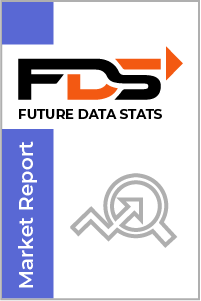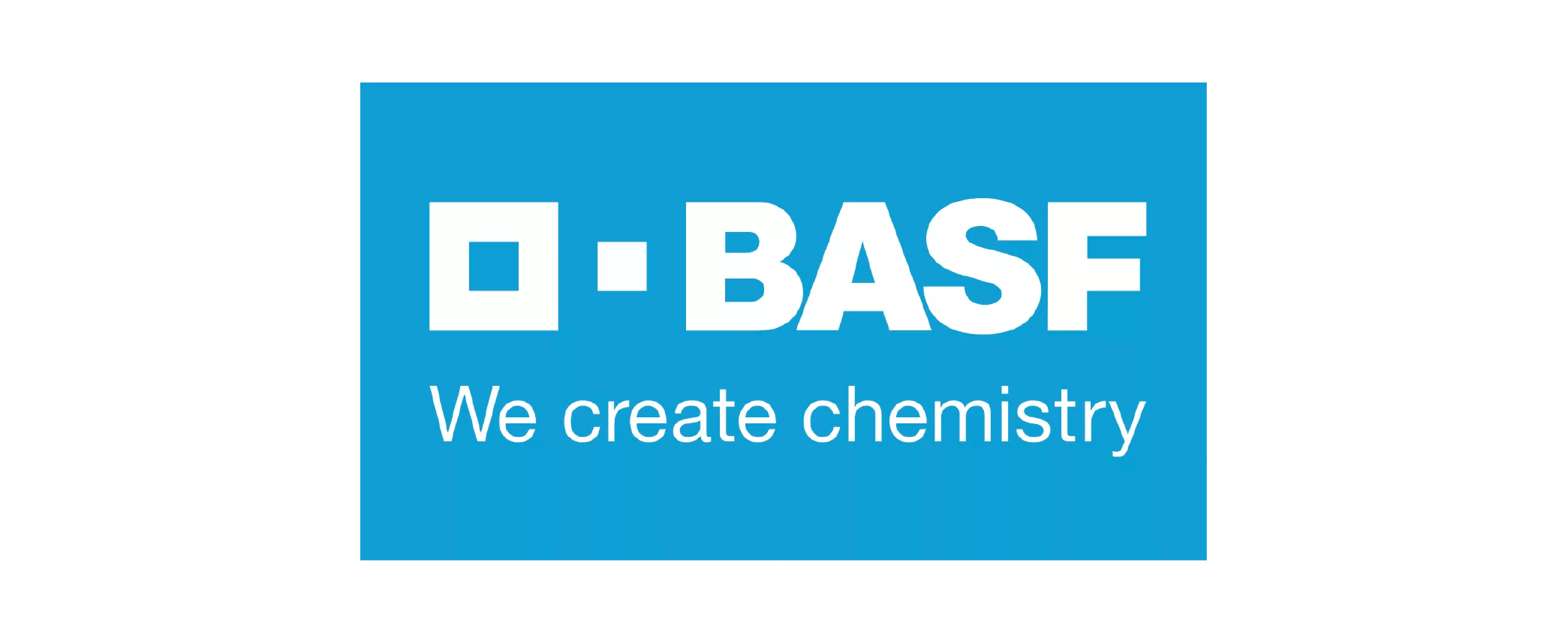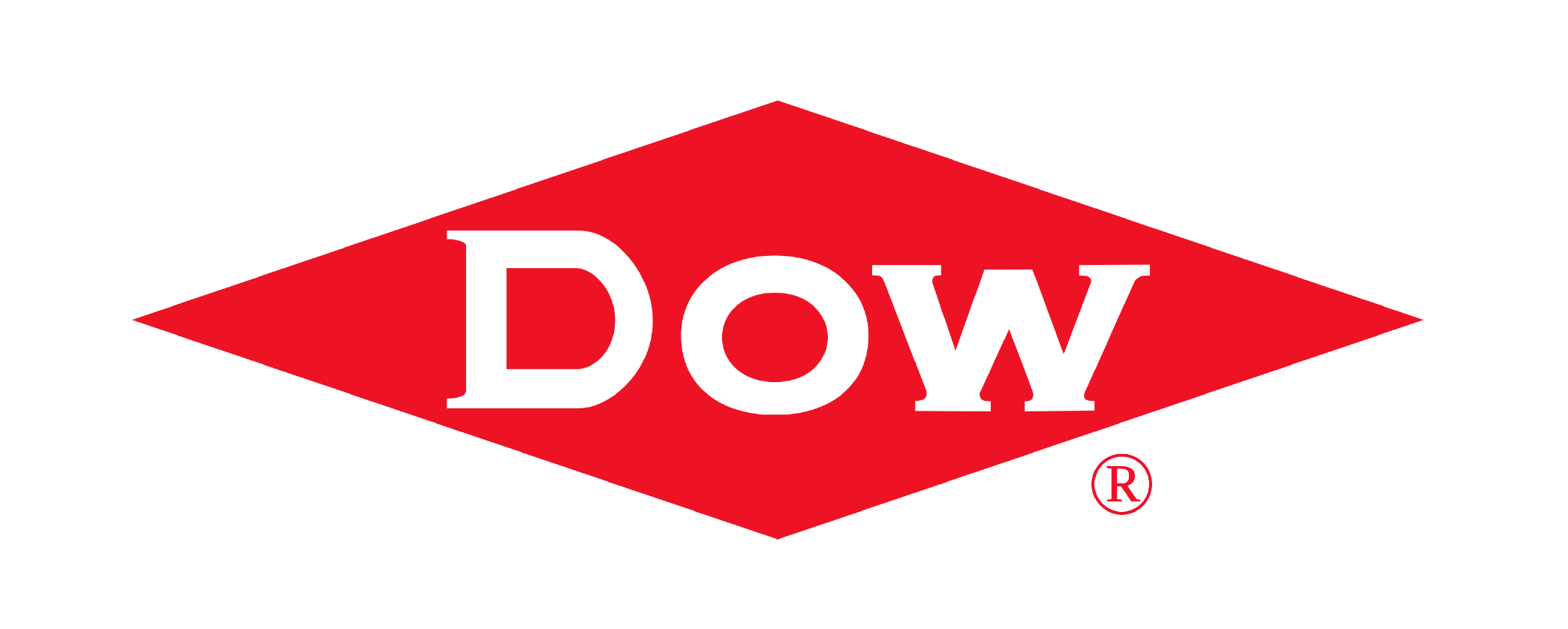The global Underwater Drone Market size was valued at USD 5.2 Billion in 2024 and is projected to expand at a compound annual growth rate (CAGR) of 15% during the forecast period, reaching a value of USD 15 Billion by 2032.
The "Underwater Drone Market Research Report" by Future Data Stats provides an in-depth examination of the Market landscape, utilizing historical data from 2021 to 2023 to identify key trends and growth patterns. Setting 2024 as the foundational year, the report explores consumer behavior, competitive forces, and regulatory frameworks that influence the industry. It transcends basic analysis, delivering a thoroughly researched forecast extending from 2025 to 2033. By employing sophisticated data analysis methodologies, the report not only outlines the Market's growth trajectory but also uncovers emerging opportunities and foresees potential obstacles, empowering stakeholders with vital insights to adeptly navigate the changing Market landscape.
MARKET OVERVIEW:
The purpose of the underwater drone market is to provide innovative solutions for exploring and monitoring underwater environments. These drones enable industries such as oil and gas, military, and research to access and inspect areas that would otherwise be difficult or dangerous for humans to reach. By using advanced technologies like cameras, sensors, and sonar, underwater drones allow for real-time data collection and efficient task execution, such as pipeline inspections, environmental monitoring, and underwater exploration. Underwater drones also serve to enhance safety and reduce costs across various sectors. They offer a more affordable and safer alternative to traditional methods, like manned submersibles or diving operations, by reducing the risk to human life and minimizing the need for complex logistics. As technology evolves, the underwater drone market continues to meet the growing demand for more precise, cost-effective, and versatile tools in underwater exploration and monitoring.
MARKET DYNAMICS:
The underwater drone market is experiencing a surge in innovation, with several trends shaping its future. One of the key current trends is the integration of artificial intelligence (AI) and machine learning into underwater drones, enabling them to perform more autonomous and complex tasks. These drones can now analyze and interpret data in real time, making them more efficient for underwater exploration and monitoring. Another notable trend is the growing adoption of underwater drones in the environmental and marine research sectors. With increasing awareness of marine conservation, drones are being used to monitor and protect marine ecosystems, track ocean pollution, and assess biodiversity, offering a cost-effective and non-intrusive solution. Looking ahead, the business scope of the underwater drone market appears promising with numerous opportunities in various industries. The oil and gas sector continues to rely on drones for underwater inspections, while advancements in battery technology are expected to increase drone endurance, making them suitable for even deeper and longer operations. Additionally, the demand for underwater drones in offshore renewable energy projects, such as offshore wind farms, is expected to rise. As these drones evolve with better sensors, propulsion systems, and payloads, they are set to play a pivotal role in enhancing safety, reducing operational costs, and increasing efficiency in both industrial and research applications.
Industries such as oil and gas, environmental monitoring, and defense are leveraging underwater drones for tasks like inspection, surveillance, and data collection. The growing need for efficient and cost-effective solutions in underwater operations fuels this demand, as businesses seek to enhance safety and reduce operational risks. However, the market faces several challenges that could hinder its growth. High initial costs and the complexity of operating underwater drones can deter potential users, particularly smaller companies. Additionally, regulatory hurdles and concerns over data security pose significant restraints. Despite these challenges, opportunities abound, especially in developing regions where marine resources are underexplored. As awareness of the benefits of underwater drones grows, companies are likely to invest in research and development, paving the way for innovative solutions and broader adoption.
UNDERWATER DRONE MARKET SEGMENTATION ANALYSIS
BY TYPE:
The market for underwater drones is largely divided into two categories: Remotely Operated Vehicles (ROVs) and Autonomous Underwater Vehicles (AUVs). ROVs dominate the market, driven by their ability to be controlled by operators from the surface, offering real-time video feeds and the capacity to perform complex tasks at significant depths. These systems are widely used in industries like oil and gas, marine research, and underwater construction due to their reliability and versatility. On the other hand, AUVs are gaining traction for their ability to operate autonomously without requiring constant control, making them suitable for long-duration missions and large-scale oceanographic surveys.
The increasing demand for both types reflects the growing applications in underwater exploration, military surveillance, and scientific research. Technological advancements in AI and machine learning further fuel the development of AUVs, enabling them to perform more intricate tasks and expand operational ranges.
BY APPLICATION:
The underwater drone market sees various applications across several industries. In the commercial sector, drones are utilized in offshore inspections, subsea surveying, and infrastructure monitoring, offering an efficient solution that cuts down on the costs and risks of human-operated methods. Military and defense applications account for a significant portion of the market, as these drones are critical for reconnaissance, surveillance, and security operations in underwater environments. Oil and gas companies use underwater drones for pipeline inspections, environmental monitoring, and subsea exploration, making these tools invaluable in ensuring operational efficiency and safety in remote and harsh environments.
The market sees growing use in environmental monitoring, with drones playing a crucial role in gathering data for marine conservation and climate studies. The surge in underwater exploration, whether for treasure hunting or archaeological research, also contributes to the market’s expansion, with drones providing a safer and more cost-effective method to reach previously inaccessible depths.
BY END-USER:
The end-user segment of the underwater drone market consists of several key players: military, commercial enterprises, research institutions, and government agencies. The military sector leads in drone usage, leveraging advanced underwater drones for defense operations such as surveillance, mine detection, and securing naval borders. Commercial enterprises in industries like oil and gas, fisheries, and shipping are increasingly adopting underwater drones for tasks like inspection, maintenance, and monitoring of underwater assets, ensuring that operations run smoothly and efficiently.
Research institutions, particularly in marine biology and oceanography, are also significant contributors, utilizing drones to collect data from remote or dangerous areas of the ocean that are otherwise difficult to explore. Government agencies, which often oversee regulatory frameworks and environmental research, have started to deploy underwater drones for monitoring marine ecosystems, conducting surveys, and supporting national security efforts, further driving the growth of this market.
BY PAYLOAD:
Payloads play an essential role in determining the functionality and efficiency of underwater drones. Cameras are one of the most common payloads, enabling visual inspections and capturing high-resolution footage of underwater environments. This feature is essential for many applications, ranging from infrastructure inspections to scientific exploration. Sensors are also critical for underwater drones, as they help measure various parameters such as temperature, pressure, salinity, and chemical composition, essential for research, environmental monitoring, and industrial applications.
Sonar systems are increasingly integrated into drones for navigation and mapping of underwater terrains, aiding in activities like deep-sea exploration and underwater construction. Lights and manipulators are additional payloads that expand the operational range of drones, allowing them to work effectively in dark or low-visibility conditions, such as deep underwater operations, or even interact with underwater objects and structures. The integration of these payloads enables underwater drones to carry out a wide array of tasks across diverse industries.
BY DEPTH:
The depth capabilities of underwater drones are a crucial factor in determining their application scope. Shallow water drones are used primarily in coastal areas, lakes, and rivers, where they are tasked with monitoring marine life, conducting inspections, and mapping underwater terrain at depths of up to a few hundred meters. These drones typically find applications in commercial, environmental, and research sectors. In contrast, deep-water drones are designed for much more challenging environments, capable of diving to extreme depths to perform high-stakes tasks like underwater exploration, offshore drilling support, and military operations.
These drones often operate in deep oceanic environments where human access is limited and conditions are harsh. The need for specialized deep-water drones continues to grow as industries seek to unlock resources from the ocean's depths, explore underwater ecosystems, and perform high-risk activities that require precise and reliable equipment.
BY PROPULSION SYSTEM:
Underwater drones use different propulsion systems, each offering distinct advantages for various tasks. Electric propulsion systems are popular in smaller, lighter drones, known for their energy efficiency and quiet operation. These drones are ideal for applications requiring maneuverability and lower power consumption, such as environmental monitoring and scientific research. Hybrid propulsion systems combine electric and mechanical components, offering extended operational ranges and enhanced performance.
These systems are commonly used in applications that require both energy efficiency and the power to operate in deeper waters. Hydraulic propulsion systems, although less common, are used for heavy-duty tasks and large-scale operations, providing high thrust and the ability to carry out tasks that require greater lifting power. These propulsion systems are essential for more demanding tasks in offshore oil and gas operations, underwater construction, and military applications, where both speed and power are critical.
REGIONAL ANALYSIS:
The underwater drone market across North America is witnessing significant growth due to increased investments in defense and research sectors. The region is a major hub for technological advancements, with companies and governmental organizations investing in autonomous underwater vehicles (AUVs) and remotely operated vehicles (ROVs) for military applications, offshore exploration, and environmental monitoring. The United States, in particular, leads the way in deploying underwater drones for both commercial and military purposes, driving demand for advanced technologies. As marine conservation efforts gain momentum, the market in North America also benefits from the growing need for underwater drones in scientific research and monitoring programs aimed at ocean health.
In Europe, the underwater drone market is expanding due to a combination of robust regulatory support and an increasing focus on renewable energy projects. Countries like the United Kingdom and Norway are investing in underwater drones for offshore wind farm inspections, marine conservation, and oil and gas operations. Additionally, Europe’s strong research and development initiatives push the boundaries of underwater drone technology, focusing on improving drone efficiency and capabilities in deep-sea environments. In Asia Pacific, the demand for underwater drones is driven by rapid industrialization and increased offshore activities. China and Japan, in particular, are deploying these drones for resource exploration, defense, and environmental monitoring. Meanwhile, Latin America, the Middle East, and Africa are gradually adopting underwater drones, mainly for oil and gas operations, offshore exploration, and search and rescue missions, with steady growth expected as technological capabilities improve and regional investments increase.
MERGERS & ACQUISITIONS:
- In January 2024: Teledyne Technologies acquired Bluefin Robotics to expand its autonomous underwater vehicle (AUV) portfolio.
- In February 2024: Saab AB partnered with Ocean Infinity to enhance underwater drone capabilities for deep-sea exploration.
- In March 2024: Boeing invested in Seatrec to develop energy-efficient underwater drones for long-duration missions.
- In April 2024: Anduril Industries acquired Dive Technologies to strengthen its undersea defense drone offerings.
- In May 2024: Kongsberg Maritime launched a new underwater drone model, the HUGIN Edge, for commercial and military use.
- In June 2024: L3Harris Technologies merged with Riptide Autonomous Solutions to advance mini underwater drone technology.
- In July 2024: DeepOcean acquired Modus Subsea Services to expand its underwater inspection and survey capabilities.
- In August 2024: Ocean Aero unveiled its next-generation solar-powered underwater drone for environmental monitoring.
- In September 2024: Sonardyne partnered with Saildrone to integrate underwater drone systems with uncrewed surface vehicles.
- In October 2024: ECA Group signed a contract with the French Navy to supply underwater mine-detection drones.
- In November 2024: Exail acquired Seatools to enhance its subsea robotics and drone solutions.
- In December 2024: Kraken Robotics secured a $20M contract for underwater drone-based seabed mapping services.
KEY MARKET PLAYERS:
- Teledyne Marine
- Kongsberg Maritime
- Saab AB
- Anduril Industries
- Boeing (Huntington Ingalls Industries - HII)
- L3Harris Technologies
- ECA Group
- Ocean Infinity
- DeepOcean
- Kraken Robotics
- Exail (formerly ECA Group merged with iXblue)
- Bluefin Robotics (subsidiary of General Dynamics)
- Sonsub (Saipem)
- Atlas Elektronik (thyssenkrupp Marine Systems)
- Hydromea
- Seatrec
- Planys Technologies
- Sofar Ocean
- Riptide Autonomous Solutions
- Ocean Aero
Underwater Drone Market: Table of Contents
Introduction
- Market Overview
- Key Market Trends
- Market Dynamics
Market Segmentation
- By Type
- By Application
- By End-User
- By Payload
- By Depth
- By Propulsion System
Market Analysis
- Regional Market Analysis
- Competitive Landscape
- Key Players and Market Share
- SWOT Analysis
Market Forecast
- Short-term Forecast
- Long-term Forecast
Industry Insights
- Technological Advancements
- Regulatory Environment
- Environmental Considerations
Conclusion
- Summary of Key Findings
- Strategic Recommendations
Underwater Drone Market Segmentation
By Type:
- Remotely Operated Vehicles (ROVs)
- Autonomous Underwater Vehicles (AUVs)
By Application:
- Commercial
- Military & Defense
- Scientific Research
- Oil & Gas
- Environmental Monitoring
- Underwater Exploration
- Search and Rescue
By End-User:
- Military
- Commercial Enterprises
- Research Institutions
- Government Agencies
By Payload:
- Cameras
- Sensors
- Sonar Systems
- Lights
- Manipulators
By Depth:
- Shallow Water
- Deep Water
By Propulsion System:
- Electric Propulsion
- Hybrid Propulsion
- Hydraulic Propulsion
By Geography:
- North America (USA, Canada, Mexico)
- Europe (UK, Germany, France, Italy, Spain, Rest of Europe)
- Asia-Pacific (China, Japan, Australia, South Korea, India, Rest of Asia-Pacific)
- South America (Brazil, Argentina, Rest of South America)
- Middle East and Africa (GCC Countries, South Africa, Rest of MEA)
WHY SHOULD YOU INVEST IN A MARKET RESEARCH REPORT?
Smarter Business Decisions:
A high-quality market research report delivers valuable insights into industry trends, customer preferences, and competitor strategies. With solid data guiding your choices, you can minimize risks and confidently pursue new opportunities—whether launching a product or expanding into new markets.
Spot Hidden Opportunities:
Market research uncovers unmet customer needs and emerging trends before they become mainstream. By aligning your products or services with these opportunities, you can stay ahead of the competition and capture untapped demand.
Know Your Competition Inside Out:
Gain a clear picture of your competitors' strengths, weaknesses, and strategies. This knowledge helps you refine your unique selling points, craft stronger positioning, and outmaneuver rivals effectively.
Sharper, More Effective Marketing:
Understanding your audience is key to successful marketing. Market research reveals who your customers are, what drives their decisions, and how they engage with brands. With these insights, you can create tailored campaigns that deliver better results and higher ROI.
Reduce Risks Before They Arise:
Every business move carries some risk—but research helps you anticipate challenges before they become costly. By analyzing market conditions and potential obstacles, you can make proactive adjustments to protect your bottom line and reputation.
Strengthen Your Case for Funding:
Investors and lenders want proof of market potential before backing a business. A well-researched report provides the data-driven evidence they need, boosting your credibility and increasing your chances of securing capital.
Stay Ahead of Industry Shifts:
Markets evolve fast, with new technologies, regulations, and consumer behaviors constantly reshaping the landscape. Regular market research ensures you stay informed, adapt quickly, and maintain a competitive edge in your industry.
RESEARCH METHODOLOGY AT FUTURE DATA STATS
At Future Data Stats, we combine decades of industry expertise with cutting-edge research techniques to deliver unparalleled market intelligence. Our team of seasoned analysts employs a dynamic, data-driven approach to uncover actionable insights, helping businesses navigate complex market landscapes with confidence.
Comprehensive & Cutting-Edge Market Analysis
We go beyond surface-level trends to provide a 360-degree view of market dynamics. Our research methodology is designed to:
✔ Accurately assess market size, growth patterns, and competitive landscapes.
✔ Identify emerging opportunities through real-time trend analysis and predictive modeling.
✔ Validate findings with high-quality data, expert consultations, and independent verification.
Our insights empower decision-makers with strategic clarity, ensuring they stay ahead in rapidly evolving industries.
Multi-Source Data Collection & Validation
We leverage a diverse mix of primary and secondary research sources, including:
- In-depth stakeholder interviews (industry leaders, suppliers, distributors, and end-users)
- Statistical databases & market reports from authoritative global sources
- Regional market intelligence to capture localized trends and demand shifts
- Proprietary analytical models tailored to specific industry needs
- By cross-verifying data from multiple streams, we ensure maximum accuracy and reliability.
Key Advantages of Our Research Approach
- Actionable Intelligence – Clear, data-backed recommendations for strategic planning.
- Technology-Enhanced Accuracy – Advanced tools for data validation and trend forecasting.
- Unbiased Insights – Independent analysis free from external influence.
Our Two-Tier Research Framework
- Primary Research – Direct Industry Engagement
- Expert Interviews: Over 25+ hours of discussions with key stakeholders across the value chain.
- Targeted Surveys: Structured questionnaires for KOLs (Key Opinion Leaders) to gauge market sentiment.
- Competitive Benchmarking: Assessing leading players to determine market positioning.
- Secondary Research – Extensive Data Synthesis
- Analysis of 3,000+ documents, including industry reports, whitepapers, and regulatory publications.
- Global & regional data mining from government databases, trade journals, and financial reports.
- Macroeconomic & sector-specific trend mapping for long-term forecasting.
Dual Analytical Approach
We employ both top-down and bottom-up methodologies to ensure precision:
- Bottom-Up Analysis: Calculating market size from granular data, ensuring detailed accuracy.
- Top-Down Assessment: Validating findings through macroeconomic indicators and industry benchmarks.
Why Choose Future Data Stats?
✔ 70+ years of collective expertise in market intelligence.
✔ Customized research models for sector-specific accuracy.
✔ Transparent, reliable, and forward-thinking insights.
With Future Data Stats, you don’t just get data—you get a strategic advantage. Partner with us to unlock the full potential of your market decisions.
Underwater Drone Market Dynamic Factors
Drivers:
- Increasing demand for underwater exploration in industries like oil and gas.
- Advancements in sensor and imaging technology boosting underwater drone capabilities.
- Growing use in military and defense for surveillance and reconnaissance.
- Rising need for environmental monitoring and oceanographic research.
- Cost-effective solutions for deep-sea exploration compared to traditional methods.
Restraints:
- High initial investment and maintenance costs.
- Limited operational time due to battery life constraints.
- Regulatory challenges and limitations in certain regions.
- Technological constraints in extreme underwater environments.
- Lack of skilled personnel to operate advanced underwater drones.
Opportunities:
- Expanding use in the renewable energy sector, especially in offshore wind farms.
- Innovations in AI and machine learning for autonomous underwater operations.
- Increasing government and private sector investment in maritime surveillance.
- Growth of underwater drone applications in scientific research and marine conservation.
- Development of smaller, more affordable drones for commercial use.
Challenges:
- Navigational difficulties in murky or deep-sea conditions.
- Integration of complex sensor systems with drones.
- Risk of cyber threats and data security issues in connected drones.
- Limited communication capabilities in underwater environments.
- Environmental impact concerns during underwater drone operations.
Underwater Drone Market Regional Key Trends Analysis
North America:
- Surge in military adoption for surveillance operations.
- Increased government funding for marine research and environmental protection.
- Rise in offshore oil and gas exploration driving demand.
Europe:
- Growth of underwater drone use in marine conservation efforts.
- Advancements in R&D for deep-water exploration technologies.
- Strong push towards renewable energy with drones supporting offshore wind projects.
Asia-Pacific:
- Rapid adoption of underwater drones in fisheries and marine resource management.
- Expanding defense budgets driving military drone acquisition.
- Increased investment in autonomous drone technology.
Latin America:
- Exploration of underwater drones for oil and gas industry.
- Rising interest in underwater drones for scientific research and marine conservation.
- Government partnerships encouraging technological advancements.
Middle East & Africa:
- Growing demand for drones in offshore oil and gas exploration.
- Exploration of drones in marine security for defense purposes.
- Surge in applications for underwater drones in environmental monitoring.
Frequently Asked Questions

















